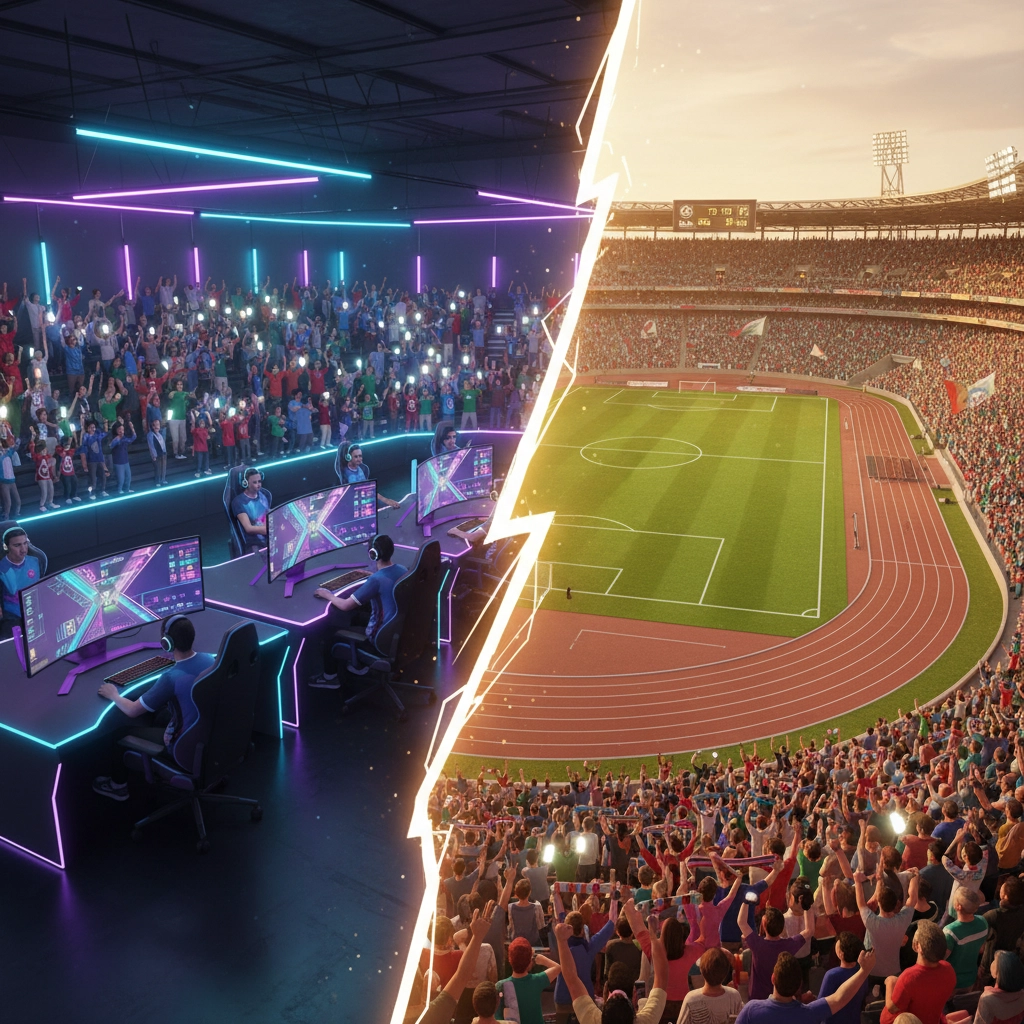The marketing landscape has shifted significantly with the emergence of esports as a legitimate advertising channel. Brands now face a strategic decision between traditional sports marketing and the rapidly growing esports sector. Each platform offers distinct advantages and challenges that directly impact return on investment.
Current market data indicates that esports sponsorship revenue reached approximately $726 million in 2024, with projections exceeding $1 billion by 2025. Traditional sports maintains larger sponsorship revenues, with established leagues like Formula 1 commanding $2.9 billion and the Premier League generating $1.68 billion in sponsorship revenue annually.
Esports Marketing Performance Metrics
Audience Engagement Analysis
Esports demonstrates superior performance in several key engagement metrics. Research indicates that esports viewers maintain higher immersion levels during sponsored content compared to traditional sports audiences. This sustained attention translates to improved message retention and brand recall rates.
Data shows that esports fans exhibit greater acceptance of advertising content than traditional sports viewers. This receptivity stems from the understanding that sponsorships directly support their preferred entertainment content and professional players.

Content Generation Capabilities
Esports operates on a continuous content creation model. Professional teams generate content through daily practice streams, social media updates, tournament broadcasts, and community interactions. This 24/7 content cycle provides exponential exposure opportunities compared to traditional sports' fixed broadcast schedules.
The interactive nature of esports content allows for real-time audience participation through platform features like Twitch chat, live polls, and Discord community engagement. This participation creates measurable engagement data for brands.
Demographic Targeting Precision
Esports reaches audiences primarily aged 16-34, encompassing Generation Z and digitally-native demographics. These audiences prove difficult to reach through conventional media channels. The esports audience demonstrates higher technology adoption rates and digital spending patterns.
Brand favorability studies indicate esports sponsorships can generate increases up to 27% in brand perception, with purchase intent rising by as much as 35% following well-executed campaigns.
Traditional Sports Marketing Analysis
Viewership Scale and Reach
Traditional sports maintains significant advantages in total viewership numbers. Major events like the Super Bowl recorded 123.7 million viewers in 2024, compared to 6.91 million peak viewership for League of Legends World Championship 2024.
This viewership scale provides unmatched reach for mass-market brands targeting broad demographic segments. Traditional sports audiences span multiple generations and socioeconomic groups.

Established Infrastructure Benefits
Traditional sports operates within mature league structures and proven sponsorship frameworks. The industry benefits from universal recognition and deep cultural integration across global markets.
Long-term athlete partnerships in traditional sports provide consistent sponsorship value. Athletes like established sports figures maintain personal brands spanning decades, offering sustained marketing opportunities.
Premium Brand Association
Association with major traditional sports properties carries institutional prestige and multi-generational brand recognition. This association provides credibility for luxury brands and financial services seeking mainstream acceptance.
ROI Comparison Analysis
Financial Performance Metrics
| Metric | Esports | Traditional Sports |
|---|---|---|
| Sponsorship Market Size | $726M (2024) | $1.68B-$2.9B (major leagues) |
| Peak Event Viewership | 6.91M | 123.7M |
| Ad Attention Retention | Higher sustained levels | Declining during ad breaks |
| Brand Favorability Impact | 27% increase potential | Lower documented increases |
| Purchase Intent Influence | 35% increase potential | Lower documented increases |
Audience Quality Considerations
Esports audiences demonstrate higher engagement rates and interactive participation levels. Traditional sports audiences provide broader demographic coverage but with passive consumption patterns.
Cost-per-engagement metrics favor esports due to audience receptivity and sustained attention levels. Traditional sports offers lower cost-per-impression due to larger audience sizes.

Platform-Specific Marketing Applications
Social Media Integration
Platforms like Fanz.us leverage both esports and traditional sports content for comprehensive fan engagement strategies. The platform's approach demonstrates how brands can utilize NIL (Name, Image, Likeness) opportunities across both sectors.
Esports integrates naturally with social media platforms through streaming services and community interaction tools. Traditional sports requires additional content creation efforts to maintain social media presence between events.
Measurement and Analytics
Esports provides detailed analytics through digital platforms, enabling precise ROI measurement through conversion tracking, promo code utilization, and direct engagement metrics.
Traditional sports measurement relies primarily on viewership statistics and survey-based brand awareness studies, providing less granular performance data.
Strategic Implementation Guidelines
Target Audience Alignment
Brands targeting ages 16-34 and technology-focused demographics achieve superior ROI through esports marketing. Companies seeking mass-market reach and multi-generational appeal benefit from traditional sports investment.
Budget Allocation Considerations
Esports requires lower initial investment with higher engagement potential per dollar spent. Traditional sports demands significant budget commitments but provides guaranteed massive exposure.
Campaign Objective Matching
Brand awareness campaigns benefit from traditional sports' broad reach capabilities. Conversion-focused campaigns achieve better performance through esports' engaged audience base and measurable interaction opportunities.
Hybrid Approach Strategies
Sophisticated marketing strategies increasingly combine both platforms to maximize coverage and optimize for distinct ROI drivers. This approach utilizes traditional sports for broad awareness building while leveraging esports for deep engagement and conversion metrics.
Companies implementing hybrid strategies report improved overall campaign performance compared to single-platform approaches. The combination addresses different stages of the marketing funnel effectively.
Future Market Projections
Esports growth projections indicate continued expansion in sponsorship revenue and audience development. Traditional sports maintains stable viewership with established revenue streams.
The integration of NIL opportunities across both sectors creates additional revenue streams for athletes and expanded marketing opportunities for brands. Platforms facilitating these connections, such as Fanz.us, provide centralized access to both marketing channels.
ROI Decision Framework
Brands should evaluate their target demographic, campaign objectives, budget constraints, and measurement requirements when selecting between esports and traditional sports marketing.
Esports delivers superior performance for engagement-focused campaigns targeting younger demographics with measurable conversion goals. Traditional sports provides optimal ROI for awareness campaigns requiring broad demographic reach and premium brand positioning.
The selection between esports and traditional sports marketing depends on specific campaign objectives and target audience characteristics. Both platforms offer distinct advantages that can be strategically utilized for optimal return on investment.
